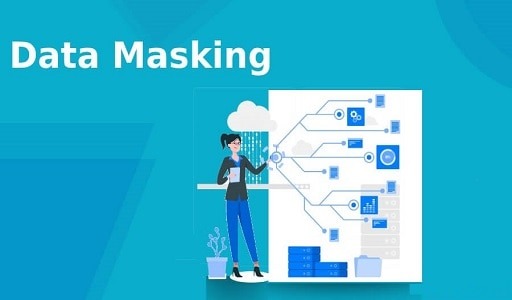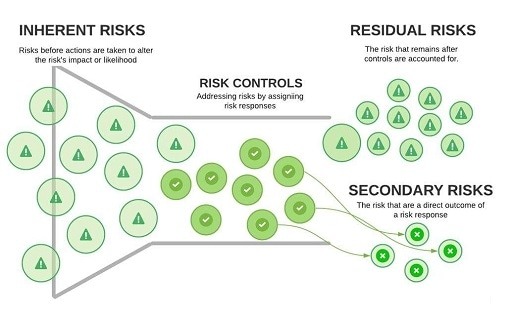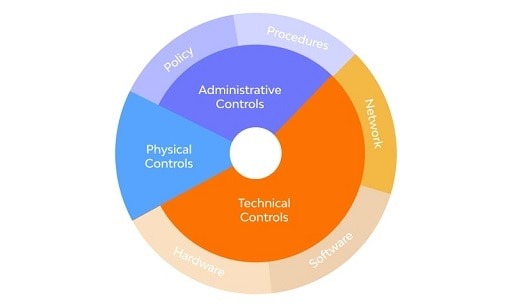Even if backing up data on a regular basis is an effective method for avoiding having to pay a ransom when your data is encrypted, that does not imply that attackers cannot still have the upper hand.
Some people are starting to resort to triple extortion ransomware operations, which threaten not only to keep your data hostage but also to disclose that information to the whole public.
How exactly does this form of ransomware encrypt files, and what can be done to protect yourself from it?

What is Triple Extortion Ransomware?
A threat actor will often encrypt your data and then demand a ransom in exchange for the key to decode it in the course of a conventional ransomware assault.
Before encrypting the data, hackers in a ransomware assault known as double extortion remove a significant amount of sensitive information from the system. If you make a backup of your data and continue to refuse to pay the ransom, the hackers will threaten to release any material that they have taken from you.
Even if you pay to receive the encryption keys, hackers may contact you after some time to try to extort further money from you by threatening to post the stolen information online.
The expansion in the number of businesses that rely on vendors and other third parties to deliver their products and services has led to an increase in the attack surface, which in turn has paved the way for triple extortion ransomware attacks.
During a triple extortion ransomware attack, a hacker attempts to extract money not only from the organization whose data they stole but also from third parties that may be negatively impacted by the exposure of the material that was taken.
How does the Triple Extortion ransomware work?
As its name implies, triple extortion ransomware adds three levels of complexity to an attack carried out by ransomware:
- Before encrypting the data, threat actors infect the victim’s system with ransomware and steal any valuable data they can get their hands on.
- The ransomware attack results in the victim receiving a note demanding payment in order to regain access to their data.
- After a certain amount of time has passed, those who posed the threat will contact the victim once more and demand that they pay a ransom or their private information will be published online.
- In order to extract money from the victim, the attackers threaten to leak their data to the victim’s associates, who could be negatively affected by the data exposure.
Organizations that store a significant amount of data pertaining to their customers or clients are particularly vulnerable to attacks using the triple extortion ransomware variant. As a result, it should come as no surprise that healthcare organizations are a target for triple extortion attacks by cybercriminals.
Hackers contacted patients of the Finnish psychotherapy clinic Vastaamo in the year 2020 in an attempt to extort money from them after they had encrypted the clinic’s computer network.
This incident became known as a well-known triple extortion attack. If the patients did not pay the ransom, they were warned that their personal information would be made public on the internet.
How to prevent Triple Extortion Ransomware
Because triple extortion ransomware employs three distinct attack vectors, it poses a significant threat to the success of your business. To protect yourself from triple extortion ransomware attacks, you should conduct regular risk assessments of your security posture and implement the required preventative measures.
The following are some tried and true suggestions for avoiding danger.
Strengthen the security of endpoints
Hackers will not often attempt to break into the network of your firm in order to install ransomware.
Instead, they search for loopholes in the personal computers used by your staff in order to get access to your network. Therefore, it is essential to improve the endpoint security in your organization.
Here are several tried-and-true approaches to take.
- Make it a requirement that all users encrypt the hard drives they use.
- Delete unneeded data from endpoint devices.
- Install a system that requires many forms of identification.
- Make a financial investment in the most up-to-date endpoint security products.
Implement Zero-Trust Model
To gain access to data or applications within a zero-trust security framework, each user is required to first be authenticated, then authorized, and lastly continually validated.
How can ransomware attacks be prevented by using zero-trust security?
Here is how it works:
- Because all of the traffic in the network with zero trust is subject to a thorough analysis, any suspicious behavior will be discovered well before it has a chance to cause any damage.
- A network is broken up into its many zones according to the zero-trust concept. Using a combination of continuous authentication, authorization, and validation, access to these zones is kept tightly under control at all times. This reduces the likelihood that data will be stolen in any way.
- The Zero-trust architecture gives you the ability to monitor and administer your network from a central location, which makes it much simpler to detect unusual patterns of user behavior and respond promptly to them.
In point of fact, the zero-trust strategy can assist you in warding off ransomware assaults. However, you should be aware of the widespread misconceptions concerning zero-trust security.
Use Strict Access Control When Necessary
You will have the ability to control who in your firm can access certain data and resources if you implement access control.
Through the use of authentication and authorization, access control may make certain that only authorized users are able to gain access to the resources that are intended for them. The information regarding your company or your customers is shielded from the prying eyes of those who would do harm.
Make sure that you are adhering to best practices for access control so that you can improve the data security at your firm.
Install Anti-Malware
It is imperative that you protect yourself from standard, double, and triple extortion ransomware assaults by utilizing a robust anti-malware tool. A tool designed to combat malware keeps an eye out for strange files that could compromise the security of a computer network.
Additionally, should any of your systems become contaminated with malware, it will clean them up for you. A decent anti-malware product will automatically update itself to combat any new ransomware that appears on the market. Ransomware developers frequently release new versions of their dangerous software. Choose from among the most effective anti-malware programs to strengthen your security posture.
Make sure that your systems are always updated
Ransomware gangs are constantly developing new ransomware technologies in order to infect devices by taking advantage of flaws in outdated operating systems and software programs.
For this reason, it is essential that you always use the most recent versions of software and operating systems on all of your computers. In addition, keeping your personal computers up to date can improve both the software and hardware compatibility of those computers.
Make sure that the update settings of all of the programs on your personal computer are set to Automatic. This will ensure that any new updates are downloaded and installed as soon as they become available.
Conduct training to raise awareness of Cybersecurity
The most common ways to get infected with ransomware, which can lead to a triple extortion attack, include falling victim to phishing attempts, downloading software from fraudulent websites, clicking on malicious URLs, and opening infected files and USB drives.
In order to ensure that your staff is able to identify dangerous email attachments, malicious URLs, and rogue websites, you should provide them with training on the best cybersecurity practices.
In addition, make sure that your workers are equipped with the most up-to-date knowledge to identify the various forms of social engineering attacks.
Put into action an IDPS system.
An intrusion detection and prevention system, often known as an IDPS, is a piece of software that performs scans on your network and personal computers to prevent hostile activity.
The Intrusion Detection and Prevention System (IDPS) will foil any effort by a hacker to get access to your computer system or network, and it will notify your security team so that they can patch any vulnerabilities that have been found.
As a result, if you want to add an essential layer of protection against a ransomware assault, you should install one of the top intrusion detection and prevention systems available.
How to prevent Triple Extortion Ransomware
You should now be familiar with the triple extortion ransomware assault and how to avoid being a victim of it. It is time to conduct a thorough assessment of your current security measures and to take the required actions to beef up your protection.
You should also know what to do in the event of a ransomware assault so that you are prepared to take rapid action in the event that anything unfavorable occurs.
Would you like to read more about how to prevent triple extortion ransomware-related articles? If so, we invite you to take a look at our other tech topics before you leave!










